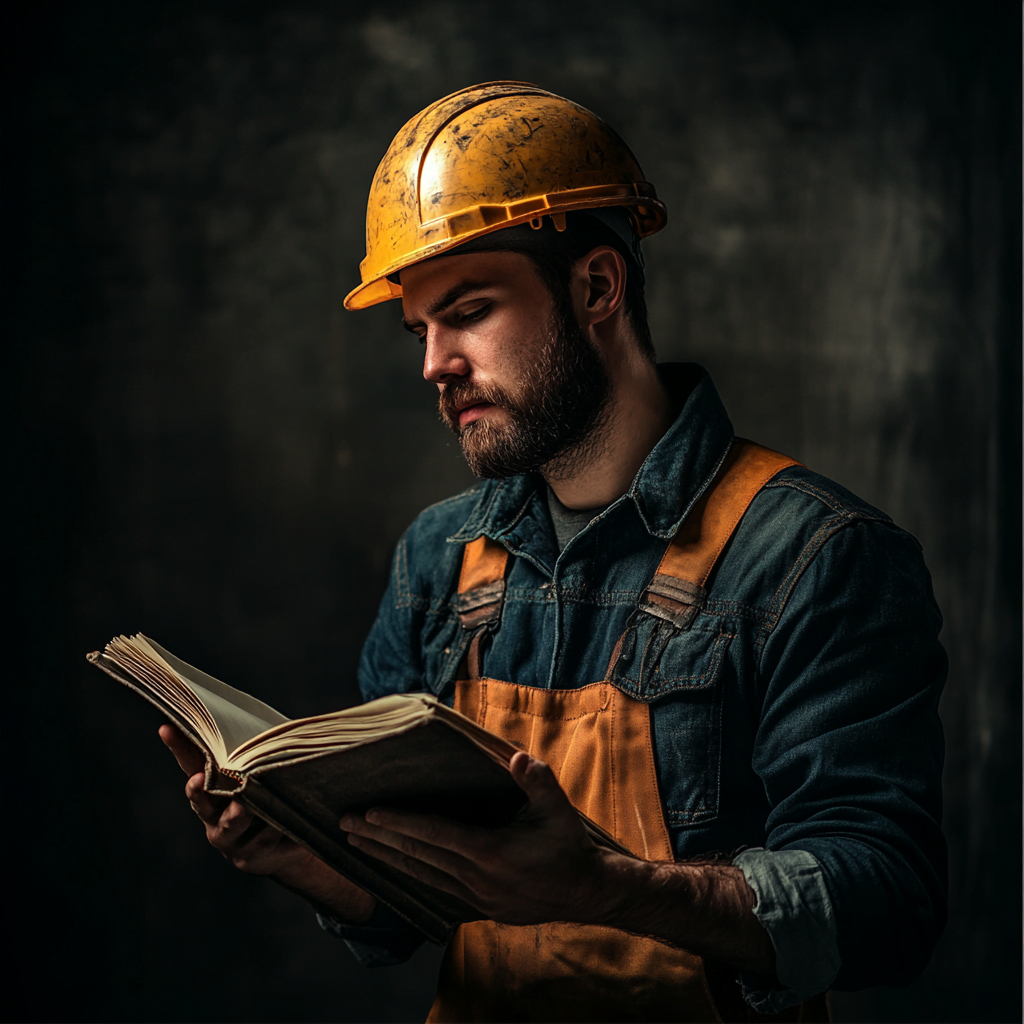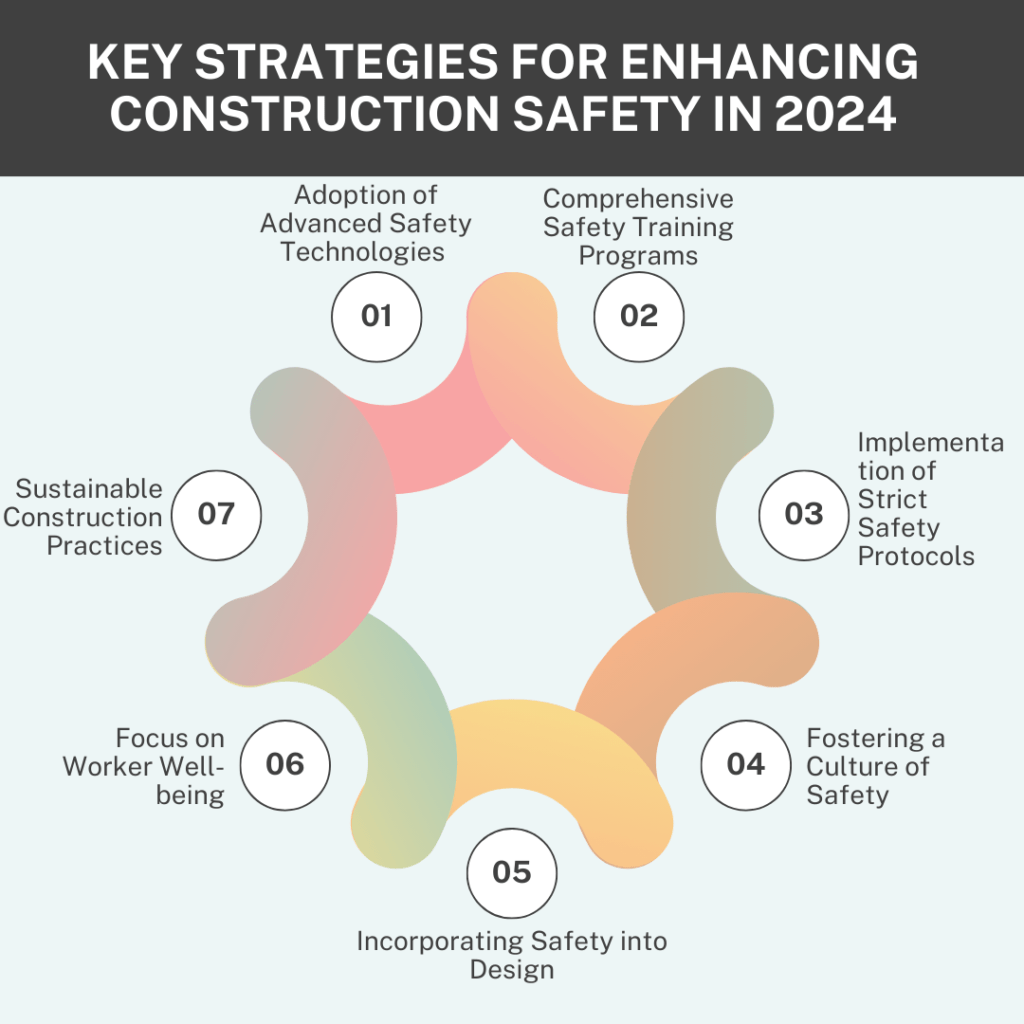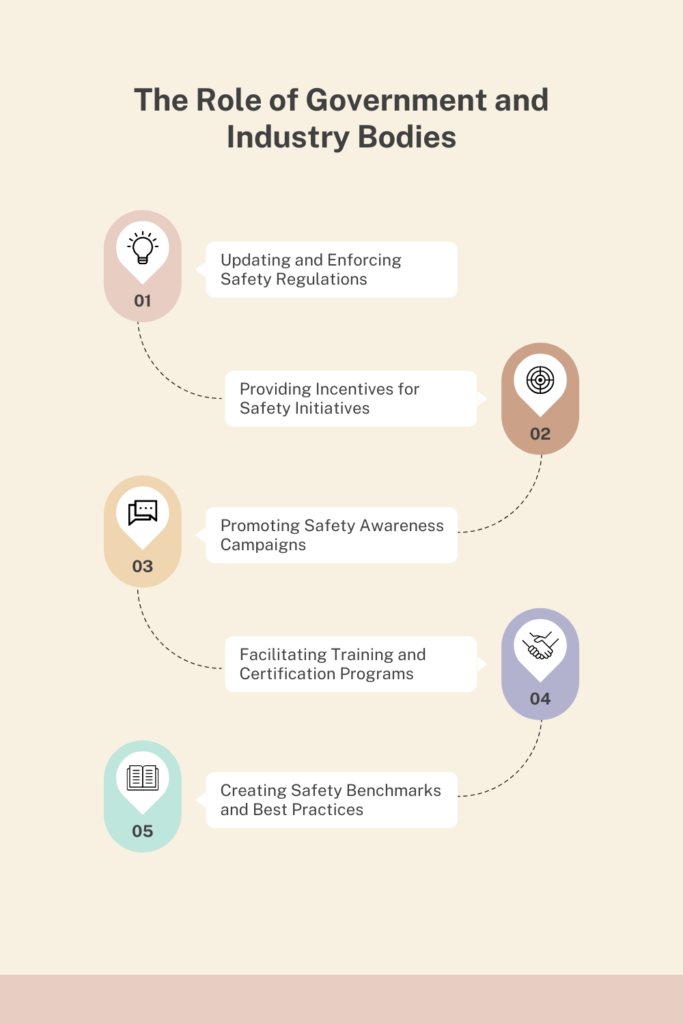The construction industry in India is at a pivotal juncture in 2024, driven by an aggressive push toward urbanization, infrastructure development, and government initiatives such as the Smart Cities Mission and Pradhan Mantri Awas Yojana (PMAY). As the sector expands, the need for rigorous safety standards has never been more urgent. Construction sites, often characterized by heavy machinery, complex logistics, and a large, diverse workforce, present inherent risks that must be meticulously managed to protect lives and ensure project success. With the construction industry being one of the largest employers in India, enhancing safety measures is not just a legal obligation but a moral imperative.
The Current State of Construction Safety in India

Despite the significant growth and modernization of India’s construction sector, safety continues to be a major concern. The industry records a high number of accidents annually, many of which result in serious injuries or fatalities. According to the National Crime Records Bureau (NCRB), the construction sector in India is one of the most hazardous, with accidents often attributed to factors such as lack of awareness, inadequate training, and non-compliance with safety standards.
In 2024, the industry must move beyond reactive measures that address safety issues only after they arise. Instead, there is a pressing need for a proactive approach to risk management that integrates safety into every stage of the construction process—from design to execution. This shift requires a deep understanding of the unique challenges faced by the Indian construction industry and the implementation of robust strategies tailored to local conditions.
The Importance of Safety in Construction
Safety in construction is critical for several reasons. First and foremost, it is about protecting human life. Every worker has the right to a safe working environment, and it is the responsibility of construction companies to ensure that this right is upheld. Beyond the moral and ethical obligations, there are also significant financial implications associated with construction accidents. Injuries and fatalities can lead to costly legal battles, project delays, and damage to a company’s reputation. Moreover, in a country like India, where construction is a key driver of economic growth, ensuring the safety of workers is essential for sustaining the sector’s momentum.
In addition to the direct benefits of accident prevention, there are indirect benefits to enhancing construction safety. Safer work environments lead to higher productivity, as workers are more likely to perform efficiently when they feel secure. Moreover, companies that prioritize safety are better positioned to attract and retain skilled labor, which is crucial in an industry where talent is in high demand. Therefore, investing in safety is not just a regulatory requirement; it is a sound business strategy that can deliver substantial returns in the long run.
Key Strategies for Enhancing Construction Safety in 2024

Adoption of Advanced Safety Technologies The integration of technology into construction safety has been transformative, offering new ways to monitor and mitigate risks. In 2024, the adoption of advanced safety technologies is essential for Indian construction companies looking to enhance their safety protocols. Some of the key technologies include:
- Drones: Drones can be used for aerial inspections of construction sites, providing real-time data on potential hazards such as unstable structures or unsafe working conditions. By identifying risks early, drones can help prevent accidents before they occur.
- Wearable Devices: Wearable safety devices, such as smart helmets and vests, can monitor workers’ vital signs, track their location, and even detect fatigue. These devices can alert workers and site managers to potential dangers, allowing for immediate intervention.
- Building Information Modeling (BIM): BIM technology enables the creation of detailed digital models of construction projects. These models can be used to identify safety risks during the design phase, allowing for the implementation of safety measures before construction begins.
- Artificial Intelligence (AI): AI-driven systems can analyze data from multiple sources to predict potential safety hazards. For example, AI can analyze weather patterns, equipment usage, and worker behavior to identify conditions that may lead to accidents. By investing in these technologies, construction companies in India can enhance their ability to monitor and manage safety risks, ultimately reducing the likelihood of accidents and improving overall project outcomes.
Comprehensive Safety Training Programs Training is a cornerstone of effective safety management. In India, where a significant portion of the construction workforce is unskilled or semi-skilled, comprehensive safety training programs are essential. These programs should cover a wide range of topics, including:
- Use of Personal Protective Equipment (PPE): Workers should be trained on the proper use of PPE, such as helmets, gloves, safety glasses, and harnesses. They should also understand the importance of PPE in preventing injuries and fatalities.
- Safe Handling of Machinery: Construction sites are filled with heavy machinery that can pose significant risks if not operated correctly. Workers should receive training on how to safely operate equipment such as cranes, forklifts, and concrete mixers.
- Emergency Response Procedures: In the event of an accident, it is crucial that workers know how to respond quickly and effectively. Training should include instruction on first aid, evacuation procedures, and how to report incidents.
- Hazard Identification and Risk Mitigation: Workers should be taught how to identify potential hazards on the construction site and how to mitigate these risks. This includes recognizing unsafe working conditions, such as exposed wiring or unstable scaffolding. Safety training should be an ongoing process, with regular refresher courses to ensure that workers remain up-to-date on the latest safety practices. Additionally, training should be tailored to the specific needs of each construction site, taking into account the unique risks and challenges associated with the project.
Implementation of Strict Safety Protocols Compliance with safety standards and protocols is non-negotiable in the construction industry. Construction companies in India must ensure that all workers are aware of and adhere to the safety guidelines outlined by regulatory bodies such as the Bureau of Indian Standards (BIS) and the Ministry of Labour and Employment. Key aspects of effective safety protocols include:
- Regular Safety Audits: Safety audits should be conducted at regular intervals to assess compliance with safety standards and identify areas for improvement. These audits should cover all aspects of the construction site, from equipment and materials to worker behavior.
- Surprise Inspections: In addition to scheduled audits, surprise inspections can help ensure that safety protocols are being followed consistently. These inspections can serve as a deterrent to unsafe practices and encourage workers to remain vigilant.
- Penalties for Non-Compliance: Companies must enforce penalties for non-compliance with safety protocols. This can include fines, suspension of work, or even termination of contracts in cases of severe violations. By holding workers and contractors accountable for safety, companies can create a culture of responsibility and reduce the likelihood of accidents. Effective safety protocols are not just about enforcement; they also require clear communication and collaboration. Workers should be encouraged to report safety concerns without fear of reprisal, and companies should take prompt action to address these concerns.
Fostering a Culture of Safety Safety should be ingrained in the corporate culture of construction firms. This means that safety is not just the responsibility of safety officers or site managers but of every individual involved in the project. A strong safety culture is characterized by:
- Leadership Commitment: Senior management must lead by example, demonstrating a commitment to safety in all aspects of the project. This includes prioritizing safety in decision-making, allocating resources for safety initiatives, and recognizing and rewarding safe behavior.
- Open Communication: Workers should feel comfortable reporting safety concerns and suggesting improvements. Companies should create channels for open communication, such as safety committees or anonymous reporting systems, to encourage worker participation in safety efforts.
- Employee Empowerment: Workers should be empowered to take ownership of safety on the construction site. This can include giving workers the authority to stop work if they identify a safety hazard and encouraging them to look out for their colleagues. Fostering a culture of safety requires ongoing effort and engagement from all levels of the organization. By making safety a core value, construction companies can create a work environment where accidents are the exception rather than the norm.
Incorporating Safety into Design Safety considerations should begin at the design stage of a construction project. By integrating safety into the design process, many risks can be mitigated before construction even begins. Key strategies for incorporating safety into design include:
- Design for Safety (DfS) Principles: DfS is an approach that considers safety throughout the design process. This includes designing structures that are easier to build safely, planning for safer access routes, and specifying materials that reduce the risk of accidents.
- Collaboration Between Designers and Contractors: Architects, engineers, and contractors should work collaboratively to identify potential safety hazards and incorporate measures to mitigate them. This collaboration can lead to more effective safety solutions and reduce the likelihood of accidents during construction.
- Use of Safe Materials: The selection of materials plays a crucial role in construction safety. Designers should specify materials that are not only durable and cost-effective but also safe for workers to handle. This includes avoiding materials that are toxic or prone to causing injuries. By considering safety early in the design process, construction companies can reduce the need for costly modifications later and create safer work environments from the outset.
Focus on Worker Well-being Worker well-being is intrinsically linked to safety. Ensuring that workers have access to clean drinking water, proper sanitation facilities, and rest areas can significantly reduce the risk of accidents. Additional strategies for promoting worker well-being include:
- Access to Healthcare Services: Providing access to healthcare services, such as on-site medical facilities or health insurance, can help workers stay healthy and reduce the risk of accidents. Regular health check-ups can also identify potential health issues before they become serious problems.
- Mental Health Support: Mental health is an often-overlooked aspect of worker well-being. Stress, anxiety, and fatigue can all contribute to accidents on the construction site. Companies should provide mental health support, such as counseling services or stress management programs, to help workers cope with the demands of the job.
- Fair Wages and Working Conditions: Fair wages and decent working conditions are essential for worker well-being. Workers who feel valued and fairly compensated are more likely to be engaged and focused on their work, reducing the risk of accidents. By prioritizing worker well-being, construction companies can create a safer and more productive work environment, leading to better outcomes for both workers and the project as a whole.
Sustainable Construction Practices Sustainable construction practices not only benefit the environment but also contribute to safety. Key aspects of sustainable construction include:
- Use of Eco-Friendly Materials: The use of eco-friendly materials, such as low-VOC (volatile organic compound) paints and non-toxic adhesives, reduces the health risks to workers. These materials are safer to handle and less likely to cause respiratory problems or other health issues.
- Waste Management: Effective waste management practices, such as recycling and proper disposal of hazardous materials, can reduce the risk of accidents on the construction site. By minimizing waste and keeping the site clean, companies can create a safer work environment.
- Energy Efficiency: Energy-efficient construction practices, such as the use of renewable energy sources and energy-saving technologies, can reduce the risk of accidents related to electrical systems and equipment. Additionally, energy-efficient buildings are often safer and more comfortable for occupants. By incorporating sustainable practices into their projects, construction companies can enhance safety, reduce their environmental impact, and contribute to the long-term sustainability of the industry.
The Role of Government and Industry Bodies
In 2024, the Indian government and industry bodies have a crucial role to play in enhancing construction safety. Key initiatives and strategies include:

- Updating and Enforcing Safety Regulations The Indian government should regularly update safety regulations to reflect the latest industry standards and technological advancements. This includes revising the Building and Other Construction Workers (BOCW) Act, 1996, to incorporate new safety requirements and penalties for non-compliance. Additionally, the government should ensure that these regulations are strictly enforced, with regular inspections and audits of construction sites.
- Providing Incentives for Safety Initiatives To encourage construction companies to prioritize safety, the government could offer incentives such as tax breaks, grants, or subsidies for companies that implement advanced safety technologies or achieve high safety performance. These incentives could help offset the costs of safety investments and motivate companies to adopt best practices.
- Promoting Safety Awareness Campaigns Public awareness campaigns can play a significant role in improving construction safety. The government and industry bodies should collaborate to launch campaigns that educate workers, employers, and the public about the importance of safety in construction. These campaigns could include advertisements, workshops, and community outreach programs.
- Facilitating Training and Certification Programs Industry bodies, such as the Builders Association of India (BAI) and the Confederation of Real Estate Developers’ Associations of India (CREDAI), should collaborate to create standardized training and certification programs for construction workers and safety professionals. These programs could be offered in partnership with educational institutions, vocational training centers, and government agencies.
- Creating Safety Benchmarks and Best Practices Industry bodies should establish safety benchmarks and best practices for construction companies to follow. These benchmarks could be based on international standards and tailored to the unique challenges of the Indian construction industry. By setting clear expectations for safety performance, industry bodies can help drive improvements across the sector.
Conclusion
As India continues to grow and develop, the construction industry will remain a cornerstone of this progress. However, this growth should not come at the expense of worker safety. In 2024, the focus on construction safety must be stronger than ever, with a comprehensive approach that includes the adoption of advanced technologies, rigorous training programs, strict safety protocols, and a culture of safety that permeates every level of the organization.
The role of the government and industry bodies is also critical in driving these changes, through the enforcement of safety regulations, the promotion of safety awareness, and the provision of incentives for companies that prioritize safety.
By adopting these strategies and fostering a commitment to safety, the Indian construction industry can significantly reduce accidents, protect workers, and ensure the successful completion of projects. Ultimately, enhancing construction safety is not just about complying with regulations; it is about building a better, safer future for all those involved in the industry.






